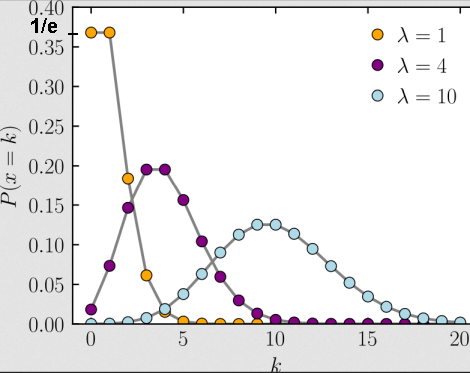Probability of k events/arrivals occuring in an interval given λ the expected/mean number of random independent events that occur in an interval.
The sample space S = {0,1,2,...} i.e. the number of events/arrivals; has no upper bound.
P(k) the probability that in the interval there will be k events / arrivals:
P(k)=
Piscatorial example: suppose λ=4 fish are caught on average in one hour.
(There's nothing fishy about Poisson!)
What is the probability of catching k=0 fish, k=1 fish, k=2 fishes, k=3 fishes, etc. in one hour?
Ex.: suppose λ=3 things exist in one cubic meter of some stuff.
What is the probability of observing k=0, 1, 2, 3, 4, 5, 6, etc. things in that cubic meter of stuff?
Ex.: Prussian Army soldiers killed by (accidental) horsekick (mules too?) was 0.61 per year (per cavalry corps).
What is the probability that no soldiers were horsekicked to death in a year, 1 soldier killed, 2, 3, 4 etc.?
Ex.: Tik Tok clicks occur 5.5 times per microsecond.
What's the chance that more than 7 occur in the next microsecond? ...
